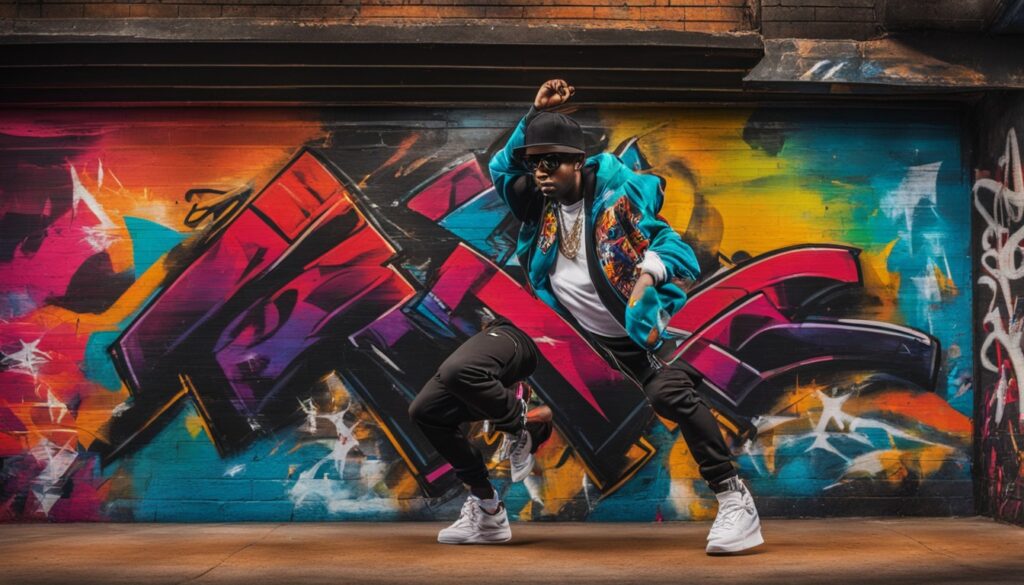From the critically acclaimed album Sometimes I Might Be Introvert, the track Point and Kill stands out as a powerful blend of Nigerian culture and political commentary. This song, featuring Obongjayar, showcases the artist’s deep connection to her roots, weaving afrobeats influences with thought-provoking themes.
The phrase Point and Kill holds dual significance. In Nigerian markets, it refers to selecting fish, but here, it becomes a metaphor for determination and ambition. The music video, directed by Ebeneza Blanche, was shot in Lagos, Nigeria, and beautifully balances cultural celebration with social critique.
Traditional attire, family scenes, and references to police brutality create a vivid narrative. The inclusion of her mother and cousins highlights her personal ties to Nigeria, making the video a heartfelt homage to her heritage. For more insights into the track, visit this detailed analysis.
Key Takeaways
- The song blends Nigerian influences with political themes.
- Collaboration with Obongjayar adds depth to the track.
- The phrase “Point and Kill” symbolizes determination.
- The music video celebrates culture while addressing social issues.
- Family appearances highlight personal connections to Nigeria.
Introduction to “Point and Kill”
Track 15 on the album, Point and Kill, stands as a rhythmic masterpiece. Positioned as the 15th song on a 19-track album, it serves as a central piece, blending Afrobeat influences with deep cultural roots. The feat of Obongjayar adds authenticity, making the collaboration feel organic and spontaneous.
Recorded in a living room, the song captures a raw and unfiltered energy. The title, inspired by Nigerian fish market traditions, carries a dual meaning. Literally, it refers to selecting fish, but metaphorically, it symbolizes determination and ambition. This phrase ties the song to broader themes of identity and empowerment.
The music video further expands the narrative. Shot in Lagos, it combines vibrant visuals with social commentary. Traditional attire, family scenes, and references to societal issues create a rich tapestry. The video not only celebrates culture but also highlights the artist’s personal connections to Nigeria.
This track is a testament to the artist’s ability to weave personal and political themes into her work. It’s a celebration of heritage and a call to action, all wrapped in a rhythmic and engaging package. For more insights into the creative process, check out this detailed analysis.
| Aspect | Details |
|---|---|
| Album Position | Track 15 of 19 |
| Collaboration | Featuring Obongjayar |
| Recording Location | Living Room |
| Title Meaning | Literal (fish market) & Metaphorical (ambition) |
| Video Themes | Cultural celebration, social commentary |
The Themes of “Point and Kill”
Delving into the layers of Point and Kill, the song intertwines cultural richness with bold political statements. It’s a reflection of identity, ambition, and societal challenges, making it a standout piece in the album.
Exploring Nigerian Culture
The song is deeply rooted in Nigerian culture, celebrating traditions and heritage. From the vibrant visuals to the afrobeats rhythm, it pays homage to the artist’s roots. The inclusion of family members in the video adds a personal touch, highlighting the importance of community.
Political Commentary
Beyond its cultural celebration, the track addresses pressing societal issues. The police standoff scene references the 2020 #EndSARS protests, a movement against police brutality in Nigeria. Simz described the track as “cleansing,” a powerful statement against systemic oppression.
The assertive lyrics, “Whatever I want, I’m going to get,” resonate with youth empowerment movements. The upbeat rhythm contrasts with the serious message, creating a unique tension that keeps listeners engaged.
Director Ebeneza Blanche intentionally frames Simz as strong, powerful, and modest, a visual representation of resilience against adversity. This duality of celebration and critique makes the song a compelling piece of art.
The Collaboration Behind the Song
The creative synergy behind this track is undeniable. It’s a testament to how collaboration can elevate art. The partnership between the artist and her team brought depth and authenticity to the project.
Little Simz and Obongjayar
The collaboration with Obongjayar added a unique layer to the song. His voice complemented the artist’s vision, creating a seamless blend of styles. This partnership was organic, reflecting shared ideas and mutual respect.
Ebeneza Blanche’s Vision
Director Ebeneza Blanche played a crucial role in shaping the visual narrative. This was his first shoot in Nigeria, and he really wanted explore the culture. He incorporated vibrant market scenes and intimate family moments to tell a compelling story.
“Positioning the artist as a strong, powerful lady… addressing police brutality.”
Blanche’s idiosyncratic framing, like the starry sky backdrop during Obongjayar’s solo, added a dreamlike quality. He also included the artist’s mother, as she wanted explore nigerian roots in a personal way.
Logistically, assembling a Lagos crew was challenging. Blanche worked with Dawa and SMUGGLER’s Luca to ensure smooth production. Despite hurdles, the team delivered a visually stunning and culturally rich video.
The Cultural Significance of “Point and Kill”
The song is a vibrant celebration of African heritage. It blends multicultural elements, creating a rich tapestry of identity and resilience. The phrase “Point and Kill” holds deep cultural roots, symbolizing both tradition and ambition.
The Phrase “Point and Kill”
Originating from Nigerian fish markets, the phrase is a metaphor for determination. It reflects the artist’s connection to her roots, celebrating well-known traditions. This duality of meaning adds depth to the track, making it both personal and universal.
Celebrating African Identity
The video features Yoruba, Igbo, and Hausa elements, showcasing the diversity of African culture. Hybrid English-Pidgin lyrics and masquerade dance cameos highlight this multicultural approach. It’s a love letter to Nigeria, as described by fans.
“First time back in Lagos since I was a kid—it healed me.”
The inclusion of extension family friends in the video adds a personal touch. It’s a heartfelt homage to the artist’s heritage, blending cultural celebration with emotional storytelling. Fans praised the video as a masterpiece of the Afro-Renaissance movement.
| Element | Significance |
|---|---|
| Yoruba, Igbo, Hausa | Cultural diversity |
| English-Pidgin Lyrics | Multicultural blend |
| Masquerade Dance | Traditional celebration |
| Family Scenes | Personal connection |
For more insights into African-inspired music, check out this detailed analysis.
The Creative Process
The making of this track was a journey of creativity and spontaneity. From the recording sessions to the music video, every step was filled with energy and authenticity. The team embraced the vibrant spirit of Lagos, letting the city guide their vision.
Recording in Lagos
Recording in Lagos brought a unique flavor to the project. The city’s bustling energy influenced the sessions, creating a raw and unfiltered sound. Obongjayar’s improvised ad-libs added a layer of spontaneity, making the track feel alive.
Simz’s mom also contributed with an unscripted money-throwing scene. These moments captured the essence of the city, blending tradition with modern creativity. The team’s post-shoot celebration at a Lagos beach party was a testament to their shared passion.
Organic Collaboration
The chemistry between the artists was undeniable. They built their connection through shared playlists of Fela Kuti, finding common ground in their love for Afrobeat. This organic collaboration allowed them to create something truly special.
Director Ebeneza Blanche described the process as fluid. “We didn’t storyboard—let the city guide us,” he said. This approach led to unscripted moments, like kids dancing beside a motorbike convoy. These scenes added authenticity to the video.
| Element | Details |
|---|---|
| Recording Location | Lagos, Nigeria |
| Improvised Moments | Obongjayar’s ad-libs, Simz’s mom’s scene |
| Collaboration Style | Organic and spontaneous |
| Post-Shoot Celebration | Lagos beach party |
Why “Point and Kill” Resonates
This track has captivated audiences worldwide, amassing over 15 million Spotify streams. Its unique blend of Afrobeats rhythms and UK drill percussion creates a cross-genre appeal that transcends borders. Fans have embraced it, sharing covers on Instagram under the hashtag #PointAndkillChallenge.
Critics have hailed it as a “blueprint for diasporic collaboration,” with Pitchfork praising its innovative approach. The song’s powerful performance and cultural depth played a key role in the artist’s 2022 Mercury Prize nomination, solidifying her global rise.
BBC Radio 1Xtra dubbed it a “new Afro-rap classic,” highlighting its significance in modern music. This lady’s ability to merge tradition with contemporary themes ensures the track remains timeless, resonating with listeners across generations.
FAQ
What is the meaning behind the song "Point and Kill"?
The track delves into themes of Nigerian culture, political commentary, and the celebration of African identity. It uses the well-known phrase “point and kill” as a metaphor for empowerment and resilience.
Who collaborated on "Point and Kill"?
The song features a powerful collaboration between Little Simz and Obongjayar, with Ebeneza Blanche directing the visually stunning music video that complements the track’s themes.
What inspired the visuals for the music video?
Ebeneza Blanche drew inspiration from Nigerian culture, creating a visual narrative that connects the song’s lyrics to its cultural roots. The video celebrates African identity and the phrase “point and kill” in a vibrant and meaningful way.
Why does "Point and Kill" resonate with listeners?
The song’s exploration of Nigerian culture, its political undertones, and the organic collaboration between artists make it a powerful and relatable piece. It celebrates heritage while addressing universal themes of strength and identity.
Where was "Point and Kill" recorded?
The track was recorded in Lagos, Nigeria, adding an authentic touch to its cultural and thematic elements. The location played a significant role in shaping the song’s sound and message.
What does the phrase "point and kill" signify in the song?
In the context of the track, “point and kill” is a metaphor for taking control and making decisive actions. It’s a well-known phrase in Nigeria, often used to describe a direct and impactful approach to challenges.


